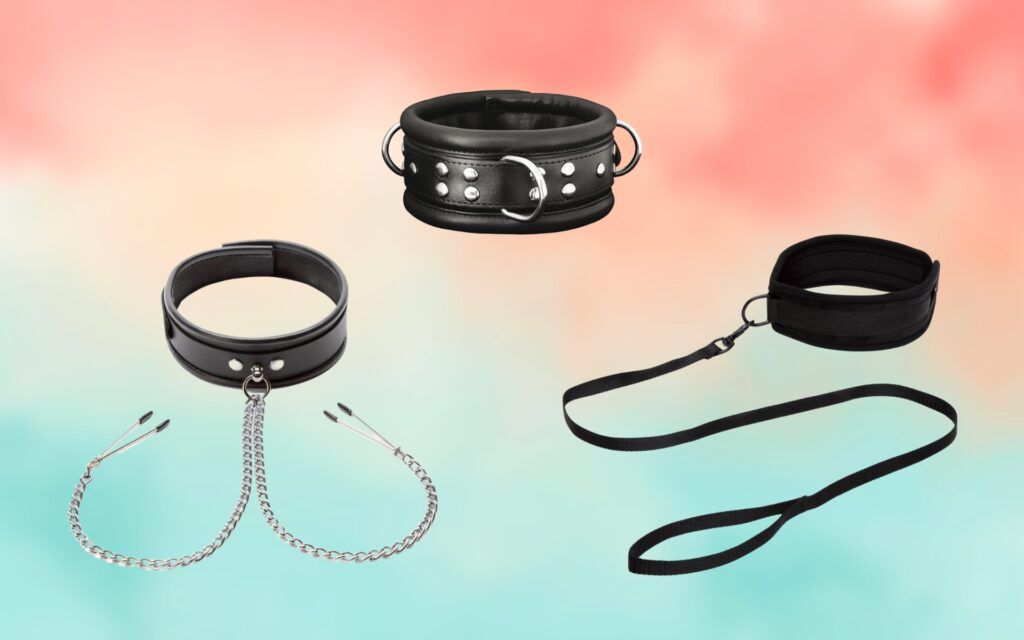Bed restraints are a fun tool used in BDSM to make playtime more exciting, but if you don’t use them correctly, you could end up hurting your partner. How can you use bed restraints in a way that doesn’t hurt your partner unintentionally? Or how can you use them to increase your partner’s and your sexual excitement?
To use bed restraints in BDSM, you can use all four cuffs to restrict your partner completely, only ankle cuffs to let them use their hands during play, or just wrist cuffs so they can adjust their legs during sex. Before you start, create safe words and discuss your limitations with your partner.
This article will discuss:
- How restraints are used in BDSM and what bed restraints are.
- Some tips you should follow before using bed restraints.
- The different types of bed restraints you’ll encounter.
- How you can use bed restraints.
Contents
How Are Restraints Used in BDSM?
Bondage play is a massive component of BDSM, as the “B” in BDSM stands for bondage. During this type of play, restraints are used to make submissives wholly or partially immobile, giving their doms complete control over them.
The exact type of bondage items used varies, with some people preferring handcuffs, hogtie restraints, bed restraints, and more. There are some excellent bondage kits available that include a wide range of tools and devices.
Playing in this manner with your partner is incredibly sexy because it gives you the power to do whatever you want to them since they cannot move. The power dynamic is a huge turn-on for many, but you should always discuss your limits and expectations with your partner to make sure you’re on the same page.
What Are BDSM Bed Restraints?
Bed restraints hold a submissive to the bed, or bedposts while standing. Typically, BDSM restraints come with four cuffs, two attached to the wrists and two to the ankles, and are incredibly restrictive, making it impossible for submissives to move if all four cuffs are used.
Tips Before You Use Bed Restraints
Bondage bed straps are a fantastic way to enhance your sex life. However, you should always discuss your limits and expectations with your partner before using them to make sure you both agree to this type of play, as well as the expectations that come from this. You may want it to be a lifestyle, while your partner might expect it to be limited to the bedroom, which could create an abusive dynamic.
You should also develop some safe words that you can use during play if things become uncomfortable.
Create Your Safe Words
Before you put your partner in their sex bed straps, the first thing you’ll want to do is establish safe words.
Commonly in BDSM, the word “red” means stop, the word “yellow” means slow down, and the word “green” means go ahead. However, you and your partner can select any words that work for you.
Establishing safewords is very important, especially when you are using bed restraints since the restrained partners can’t physically indicate that they don’t like something by moving away. Having these words makes both partners feel safe and permits you to try new things since you know you’ll be able to say your safe word if things get too intense.
Talk About Your Expectations
You and your partner should thoroughly discuss what you expect from the bed restraint experience and what you hope to get out of the encounter. Feel free to go over the scenario in detail, like which positions you want to try, how many appendages you’re comfortable with having cuffed, and so on.
While discussing your sexual encounter thoroughly may sound boring, it’ll actually make things better for you and your partner since you’ll both be getting precisely what you want from the experience. Who doesn’t enjoy talking about sex?
Discuss Your Limits
Once you and your partner have gone over what you expect from the encounter, you should discuss things you are uncomfortable with. For example, if your partner is claustrophobic and is afraid of being restrained while they are face-down on the bed, they should let you know that this position is off-limits.
Even if your partner gives you permission to try a specific position while they are restrained, you should still go slow. Pay attention to their body language and watch for their slow-down and stop signals. Never try anything that either you or your partner feels unsure about. You want your bed restraint session to be fun but also safe!
Different Types of Bed Restraints
The most commonly used bed restraints are under the bed straps, which go underneath the mattress, meaning you don’t need a headboard or bedposts to adhere to. There are two main types of under-the-bed straps that you can choose from, including X bed restraints and dual-strap bed restraints. Let’s look at the advantages and disadvantages below.
The X Bed Restraint
As you may have guessed, X bed restraints are “x” shaped, where all four straps are connected, with the middle of the “x” going underneath the center of your bed’s mattress. Once the center is in place, each of the four straps goes beneath the mattress to one of the bed’s corners, two going towards the top to restrain the wrists and two towards the bottom to secure the ankles.
The main advantages of this style of bed restraint are that:
- They are highly adjustable: X bed restraints permit you to tighten and loosen each strap, which allows you to bring your partner’s limbs closer together or spread them further apart.
- You can leave them in place once they’re installed: After you’ve positioned your x strap restraints underneath your bed, you can leave them in place all of the time. Tuck them under the mattress when they aren’t in use, which is a great feature since you’ll be able to restrain your partner whenever the mood strikes, with no lengthy set-up required.
- Straps fit any sized bed: The straps are typically length-adjustable, meaning you can use them on any sized bed, from a twin to a king.
The main disadvantage of this style of bed restraint is:
- They are a little tricky to set up: Some users find it hard to position the X straps underneath their beds properly since they have to lift their entire mattress and try to place the middle of the “x” precisely in the center. However, once you get the straps in the correct position, you can leave them set up all of the time, which may make the initial challenge worth it.
The Dual Strap Bed Restraint
Dual bed straps consist of a top set of straps and a bottom set of straps that aren’t connected. The top strap has two wrist cuffs, while the bottom has two ankle cuffs. To set up this restraint, lift each end of the bed and place one strap around the top of the mattress and the other around the bottom.
The main advantage of dual strap bed restraints is:
- They are easy to install: Unlike with X strap restraints, all you have to do is lift each end of the mattress to put these restraints on your bed, with no need to find the center. This is a great feature, especially if your mattress is really heavy.
The primary disadvantages of this restraint style are:
- The cuffs’ distances aren’t adjustable: Unlike with X straps, you are unable to adjust how close or far apart the cuffs are. So, if your partner is tall or petite, the cuff’s positioning might be a little uncomfortable.
- Requires you to take them off after each use: This restraint requires you to remove the straps from each end of your bed after every play session. So, if you and your partner spontaneously want to use your bed restraints, you’ll have to stop what you’re doing and put them on the bed, which can spoil the mood.
Under Bed Restraint Positions
There are several ways in which you can use bed restraints during BDSM play. Here are the most common ways.
Cuffed Ankles and Wrists Faced-Up
The most classic bed restraint position in which you cuff your lover’s wrists and ankles to the bed while they lay face up is very vulnerable and can be a massive turn-on for your partner. It is also an excellent position for foreplay and teasing since your partner will be able to see you teasing them, but they won’t be able to do anything about it.
Cuffed Ankles and Wrists Face-Down
In this position, your partner is lying face down on the mattress with both wrists and ankles cuffed. This position is incredibly submissive since your lover won’t see what’s going on behind them. You may enjoy spanking or flogging your partner using a spanking paddle or trying anal play while they are tied down on the bed.
Cuffed Ankles
The ankle cuffed position is excellent if you want your partners to be spread eagle. This position is also ideal if your partner is uncomfortable with being fully restrained since their hands will be free.
Allowing your partner’s hands to be free will give them the freedom to touch you while their legs remain tied down, permitting you to do whatever you want with their lower halves. If males are restrained, a face-up position is ideal for both foreplay and sex. If females are tied down, face-up is great for foreplay and face-down is easier for intercourse.
Cuffed Wrists
If you enjoy when your partner wraps their legs around you or bend their knees during sex, you may prefer the wrists-cuffed position, which will keep their hands tied so they can’t touch you while also allowing you to adjust their lower half to make sex more comfortable. If you’d like, you can start with your lovers’ wrists and ankles cuffed for foreplay, then uncuff their feet when it’s time to get down and dirty.
Conclusion
BDSM bed restraints are a fun way to spice things up in the bedroom. You can use them to cuff your partner, permitting you to have your way with them. They can be used in several ways, including with both ankles and wrists cuffed, just wrists cuffed, or just ankles cuffed, allowing you to try different positions.
Just remember – always talk with your partner before using bondage bed straps to determine their expectations and limitations!










